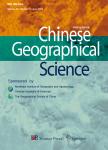International Freight Forwarding Services Network in the Yangtze River Delta, 2005–2015: Patterns and Mechanisms
International Freight Forwarding Services Network in the Yangtze River Delta, 2005–2015: Patterns and Mechanisms作者机构:Key Laboratory of Watershed Geographic Sciences Chinese Academy of Sciences Nanjing Institute of Geography and Limnology Chinese Academy of Sciences University of Chinese Academy of Sciences The Center for Modern Chinese City Studies & School of Urban and Regional Science East China Normal University
出 版 物:《Chinese Geographical Science》 (中国地理科学(英文版))
年 卷 期:2019年第29卷第1期
页 面:112-126页
核心收录:
学科分类:0303[法学-社会学] 02[经济学] 0202[经济学-应用经济学] 0201[经济学-理论经济学] 020105[经济学-世界经济] 0708[理学-地球物理学] 020202[经济学-区域经济学] 0705[理学-地理学] 0813[工学-建筑学] 0704[理学-天文学] 0833[工学-城乡规划学]
基 金:National Natural Science Foundation of China(No.41671132,41771139) Natural Science Foundation of Jiangsu Province(No.BK20171516)
主 题:international freight forwarding service network pattern mechanism headquarters-branch method Yangtze River Delta
摘 要:This study examined the spatio-temporal trajectories of the international freight forwarding service(IFFS) in the Yangtze River Delta(YRD) and explored the driving mechanisms of the service. Based on a bipartite network projection from an IFFS firm-city data source, we mapped three IFFS networks in the YRD in 2005, 2010, and 2015. A range of statistical indicators were used to explore changes in the spatial patterns of the three networks. The underlying influence of marketization, globalization, decentralization, and integration was then explored. It was found that the connections between Shanghai and other nodal cities formed the backbones of these networks. The effects of a city s administrative level and provincial administrative borders were generally obvious. We found several specific spatial patterns associated with IFFS. For example, the four non-administrative centers of Ningbo, Suzhou, Lianyungang, and Nantong were the most connected cities and played the role of gateway cities. Furthermore, remarkable regional equalities were found regarding a city s IFFS network provision, with notable examples in the weakly connected areas of northern Jiangsu and southwestern Zhejiang. Finally, an analysis of the driving mechanisms demonstrated that IFFS network changes were highly sensitive to the influences of marketization and globalization, while regional integration played a lesser role in driving changes in IFFS networks.



